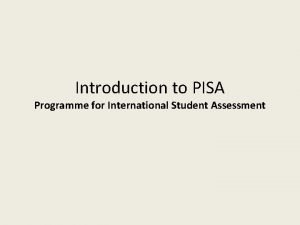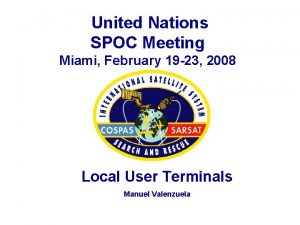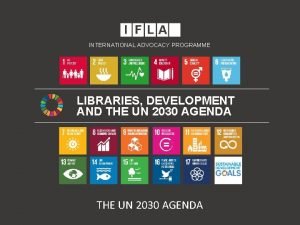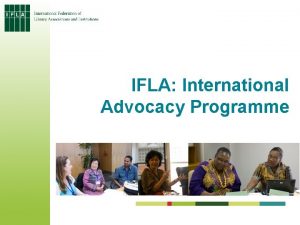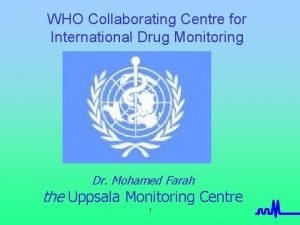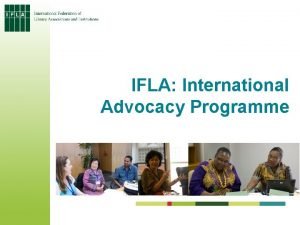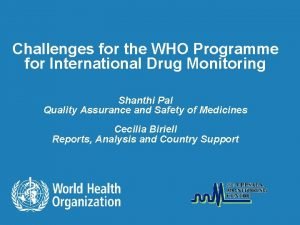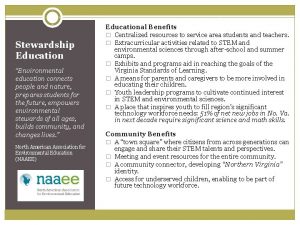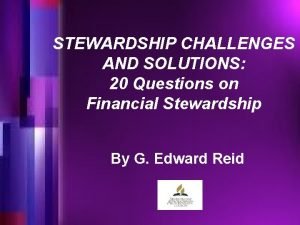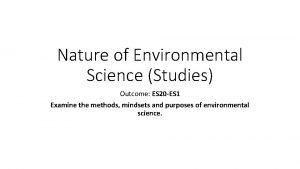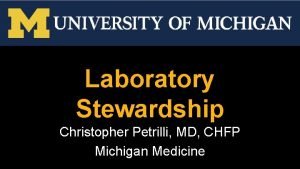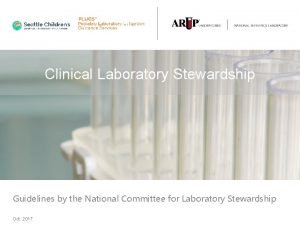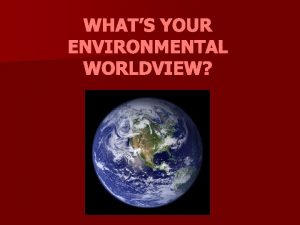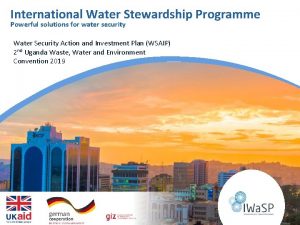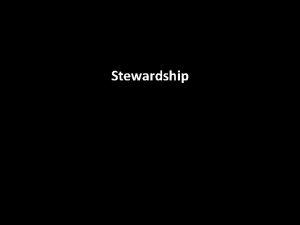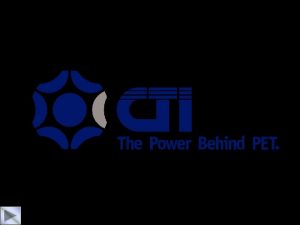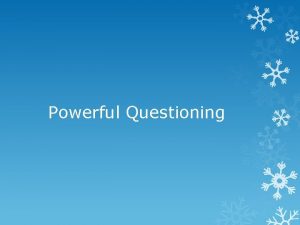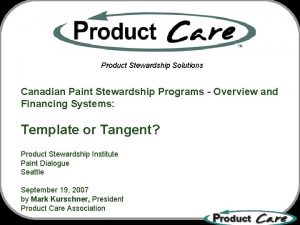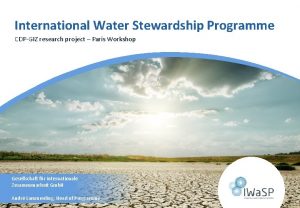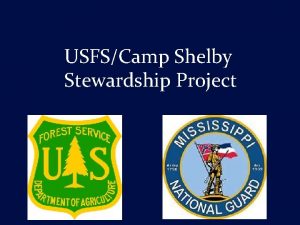International Water Stewardship Programme Powerful solutions for water

![Why leaders put water high on the agenda? The Economics of Water [security] crisis Why leaders put water high on the agenda? The Economics of Water [security] crisis](https://slidetodoc.com/presentation_image_h/2a8330510407033614569f435d726e12/image-2.jpg)













- Slides: 15

International Water Stewardship Programme Powerful solutions for water security Water Security Action and Investment Plan (WSAIP) 2 nd Uganda Waste, Water and Environment Convention 2019 IWa. SP workshop, Kampala, 15 Jan 2019
![Why leaders put water high on the agenda The Economics of Water security crisis Why leaders put water high on the agenda? The Economics of Water [security] crisis](https://slidetodoc.com/presentation_image_h/2a8330510407033614569f435d726e12/image-2.jpg)
Why leaders put water high on the agenda? The Economics of Water [security] crisis ranks among the Top 5 Global Risks identified by the World Economic Forum every year since 2012. (World Economic Forum: Global Risks Report 2017) “With water in short supply, there will be changes in what is produced, where it is produced, and the efficiency of production and water use. So, even local changes can be transmitted across the globe. ” „Improved water stewardship thus pays high economic dividends. ” (World Bank Group: High and Dry, 2016)

How have we responded? International Water Stewardship Program Countries and Key Partners SAINT LUCIA ZAMBIA UGAND A PAKISTAN KENYA GRENADA t HONDURAS TANZANIA COLOMBIA PERU SOUTH AFRICA ETHIOPIA IWASP Countries Other GIZ Water Stewardship Projects IWa. SP: 26, 5 m (2013 -2019) from German and British Government Over 25 partnerships > 100 Partners; Sectors: Food&Beverage, Oil&Gas, Mining, Textile, Agriculture, Insurance

CAPACITY BUILDING AND EMPOWEMENT Strong Evidence Base, X 20 Prioritised Projects, and Empowered Stakeholders METHODOLOGY DEVELOPMENT, REFINEMENT AND DISSEMINATION Conceptual Framework How can we address the challenge in Greater Kampala? The WSAIP is an integrated water security action and investment plan in the Greater Kampala Metropolitan Area (GKMA) to support sustainable social and economic development.

a. Stakeholder Engagement Stakeholders Plan Individual engagements e. g. Bilateral meetings and workshops (common ground) § Government § Private sector § Communities § Academia Target (. gov. com. org) § Multi-stakeholder engagement platforms (e. g. Workshops) § Bilateral meetings § Collaboration in projects development § Seminars Training Programme (TT) § Course + platform 5

b. WSAIP Study & Risk Assessment Situation analysis- hotspot identification & baseline for analysis Economic analysis– Benefits assessment to build a case for investment. Formulation of alternative scenarios to estimate water security benefits Based on The Contribution of Water Resource Development and Environmental Management to Uganda’s Economy” (Industrial Economics, 2016). § § Ecosystems Health & Extent Solid Waste Stormwater Runoff Effluent Treatment BAU Development Degraded and poorly functioning ecosystems Only half of waste generated collected Increase the impervious land limited drainage Insufficient effluent management systems Water Secure Focused Development Restored and maintained ecosystems 95% waste generated collected 75% of region with adequate stormwater management Comprehensive effluent management systems

c. Scenario Development – Project Screening & Prioritization § Develop long list of project § Screening long list to short list using qualitative approach (multicriteria analysis). § Prioritisation projects on short list using quantitative approach

Scenario Development – Project screening (Stage I Multicriteria Analysis) § Criteria used to evaluate the merits of these investments and actions § Weights measure the importance of the criteria § Ratings - the scores for each investment/action and criteria combination

Criteria developed from Multi-Stakeholder Engagements. Org 1. Environmental Quality Improvement 2. Socio- economic Benefits Provision . Gov 3. Public Health Improvement 4. Project Characteristics and Sustainability. . Com

Weights developed from Multi-Stakeholder Engagements. Org . Gov . Com

Scenario Development– Project Prioritisation Stage II- Water Security Investment Model § Quantitatively compare short list projects based on indicator performance for example climate change resilience, economic growth, etc.

d. Ideation Road Map – Project Idea Action Areas Land Use, Catchments and Ecosystems Water Supply and Sanitation Solid Waste Management Effluent Management Urban Planning & Land Use Water Suppy & Sanitation (Informal Settlements) Solid Waste Management (Informal Settlements) Non Point Source Pollution Catchment Management Feacal Sludge Management Solid Waste Management Services (3 Rs) Industrial Pollution Storm Water & Flood Mgt Management Source Protection (Surface & Groundwater) Community Empowerment Commercial & Residential Pollution Natural Resource Management (wetlands and green spaces). Water Supply & Sanitation (Formal Settlements) Regulations & Enforcement Community Empowerment & Institutional Strengthening Institutional Framework on Sanitation Management. Community Empowerment & Institutional Strengthening

Ideation Road Map – Developed Generic Investment §Actions Brainstorming and gathering of ideas (Workshops & Bilateral meetings) § Review of national and institutional strategic plans and programme documents Technical Team Ideation workshop (28 May 2019) Private Sector Ideation workshop th (29 May & 04 July 2019) Bi-lateral engagements local partners & Int'l partners (EU ) 20 May to 15 July 2019 CSO Ideation workshop (21 st June 2019) Internal ideation Meetings- Lead Partners & Line agencies (25 June to 10 July) 47 Multi-Stakeholder Projects th 30 July 2019 TA ideas (one on one follow-up and literature review - case studies elsewhere) 01 June to 25 July 2019

Ideation: Generic Multi-stakeholder Projects Conceived § Communal flood management § Leveraging Public Private Partnerships for Fecal Sludge Management in Municipal Towns § Piloting industrial and business symbiosis to manage solid waste – mobile app § Greening Urban Open Spaces (Integrating landscaping into build environment) § Sustainable Urban Agriculture initiative – upstream/downstream management § Lake front management § Scaling up water supply options for improved water access in informal settlements § Upgrade of Informal Settlements § Industrial/Enterprise Water Demand Management Programme

The Water Security Action and Investment Plan Delivering Powerful Multi-stakeholder Investment Actions for A Water Secure Greater Kampala END Mathew Parr GIZ Country Coordinator IWASP mathew. parr@giz. de
 Water and water and water water
Water and water and water water Programme for international student assessment 2021
Programme for international student assessment 2021 Meolut next
Meolut next Twitterifla
Twitterifla International advocacy programme
International advocacy programme Pull out you've hit an artery
Pull out you've hit an artery International advocacy programme
International advocacy programme Who programme for international drug monitoring
Who programme for international drug monitoring Stewardship
Stewardship Tithes verse tagalog
Tithes verse tagalog Environmental science
Environmental science John petrilli md
John petrilli md Laboratory stewardship
Laboratory stewardship 7 principles of stewardship
7 principles of stewardship Why is stewardship important
Why is stewardship important Environmental wisdom worldview
Environmental wisdom worldview

